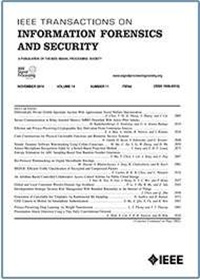GTAE-IDS: Graph Transformer-Based Autoencoder Framework for Real-Time Network Intrusion Detection
IF 8
1区 计算机科学
Q1 COMPUTER SCIENCE, THEORY & METHODS
IEEE Transactions on Information Forensics and Security
Pub Date : 2025-04-03
DOI:10.1109/TIFS.2025.3557741
引用次数: 0
Abstract
Network intrusion detection systems (NIDS) utilize signature and anomaly-based methods to detect malicious activities within networks. Advances in machine learning (ML) and deep learning (DL) algorithms have enabled NIDS to analyze large volumes of data and identify complex patterns. However, traditional ML/DL approaches in NIDS have primarily relied on flow-based features and utilized flat data formats, such as vectors or grids, which limit their ability to recognize the structural and contextual nuances of network attacks, particularly in real-time. Additionally, most NIDS depend on supervised or semi-supervised learning, requiring extensive labeled data that is time-consuming to generate and not always feasible. This reliance restricts their ability to detect novel attacks, as they typically only recognize threats similar to those encountered during training. Hence, there is a significant need to develop NIDS that can operate in near real-time, eliminate the need for labeled data, and effectively identify novel attack patterns. We propose GTAE-IDS, a novel unsupervised packet-based graph neural network framework aimed at early and precise anomaly detection in network traffic. GTAE-IDS employs graph embeddings to capture and process network traffic data swiftly, creating sequential packet-based graphs that reflect network communications. Our approach employs graph autoencoders to identify structural and global patterns in benign data without needing labeled graph data, enhancing detection capabilities against novel attacks. Incorporating transformers in the encoder segment, GTAE-IDS effectively discerns contextual patterns in network traffic, achieving over 98% accuracy in identifying malicious activities on benchmark network intrusion data sets.GTAE-IDS:基于图变换器自动编码器的实时网络入侵检测框架
网络入侵检测系统(NIDS)利用签名和基于异常的方法来检测网络中的恶意活动。机器学习(ML)和深度学习(DL)算法的进步使NIDS能够分析大量数据并识别复杂模式。然而,NIDS中的传统ML/DL方法主要依赖于基于流的特征,并利用平面数据格式(如矢量或网格),这限制了它们识别网络攻击的结构和上下文细微差别的能力,特别是在实时情况下。此外,大多数NIDS依赖于监督或半监督学习,需要大量标记数据,这些数据生成耗时且并不总是可行。这种依赖限制了他们检测新攻击的能力,因为他们通常只识别与训练期间遇到的威胁相似的威胁。因此,非常需要开发能够近乎实时操作的NIDS,消除对标记数据的需求,并有效识别新的攻击模式。我们提出了一种新的无监督的基于数据包的图神经网络框架GTAE-IDS,旨在早期和精确地检测网络流量中的异常。GTAE-IDS使用图形嵌入来快速捕获和处理网络流量数据,创建反映网络通信的基于分组的顺序图形。我们的方法使用图形自动编码器来识别良性数据中的结构和全局模式,而不需要标记图形数据,从而增强了对新攻击的检测能力。在编码器段中加入变压器,GTAE-IDS有效地识别网络流量中的上下文模式,在基准网络入侵数据集上识别恶意活动的准确率超过98%。
本文章由计算机程序翻译,如有差异,请以英文原文为准。
求助全文
约1分钟内获得全文
求助全文
来源期刊

IEEE Transactions on Information Forensics and Security
工程技术-工程:电子与电气
CiteScore
14.40
自引率
7.40%
发文量
234
审稿时长
6.5 months
期刊介绍:
The IEEE Transactions on Information Forensics and Security covers the sciences, technologies, and applications relating to information forensics, information security, biometrics, surveillance and systems applications that incorporate these features
 求助内容:
求助内容: 应助结果提醒方式:
应助结果提醒方式:


